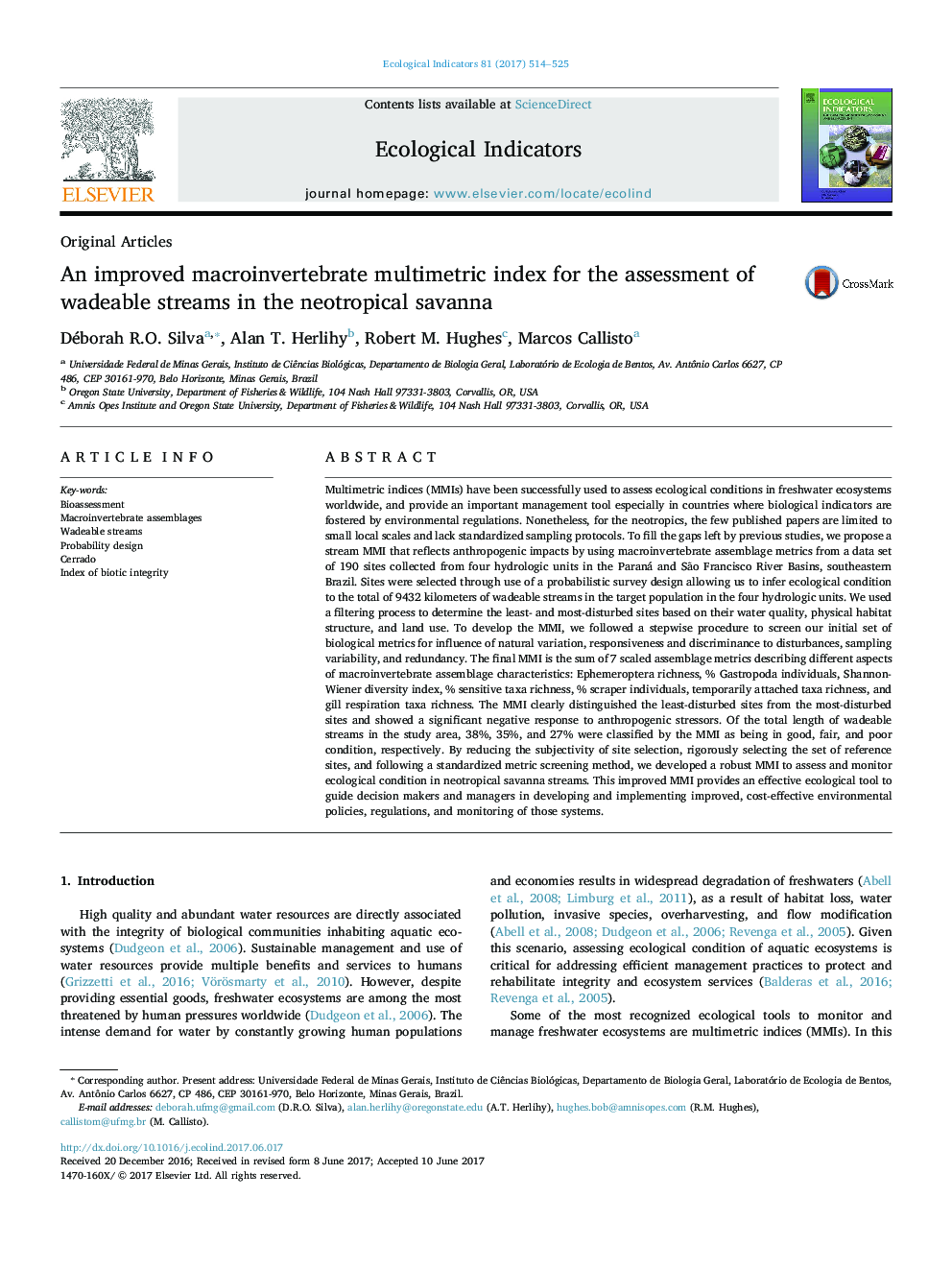| کد مقاله | کد نشریه | سال انتشار | مقاله انگلیسی | نسخه تمام متن |
|---|---|---|---|---|
| 5741454 | 1617121 | 2017 | 12 صفحه PDF | دانلود رایگان |
- From 40,320 possible MMI models we selected the one with the best discriminance and responsiveness.
- The MMI performed well for both local and regional assessments.
- MMI scores were strongly associated with land use, water quality, and physical habitat structure.
- The probability survey design allowed us to infer results to the total length of wadeable streams in the study area.
- 38% of the total length of wadeable streams in the study area was in good condition.
Multimetric indices (MMIs) have been successfully used to assess ecological conditions in freshwater ecosystems worldwide, and provide an important management tool especially in countries where biological indicators are fostered by environmental regulations. Nonetheless, for the neotropics, the few published papers are limited to small local scales and lack standardized sampling protocols. To fill the gaps left by previous studies, we propose a stream MMI that reflects anthropogenic impacts by using macroinvertebrate assemblage metrics from a data set of 190 sites collected from four hydrologic units in the Paraná and São Francisco River Basins, southeastern Brazil. Sites were selected through use of a probabilistic survey design allowing us to infer ecological condition to the total of 9432 kilometers of wadeable streams in the target population in the four hydrologic units. We used a filtering process to determine the least- and most-disturbed sites based on their water quality, physical habitat structure, and land use. To develop the MMI, we followed a stepwise procedure to screen our initial set of biological metrics for influence of natural variation, responsiveness and discriminance to disturbances, sampling variability, and redundancy. The final MMI is the sum of 7 scaled assemblage metrics describing different aspects of macroinvertebrate assemblage characteristics: Ephemeroptera richness, % Gastropoda individuals, Shannon-Wiener diversity index, % sensitive taxa richness, % scraper individuals, temporarily attached taxa richness, and gill respiration taxa richness. The MMI clearly distinguished the least-disturbed sites from the most-disturbed sites and showed a significant negative response to anthropogenic stressors. Of the total length of wadeable streams in the study area, 38%, 35%, and 27% were classified by the MMI as being in good, fair, and poor condition, respectively. By reducing the subjectivity of site selection, rigorously selecting the set of reference sites, and following a standardized metric screening method, we developed a robust MMI to assess and monitor ecological condition in neotropical savanna streams. This improved MMI provides an effective ecological tool to guide decision makers and managers in developing and implementing improved, cost-effective environmental policies, regulations, and monitoring of those systems.
Journal: Ecological Indicators - Volume 81, October 2017, Pages 514-525
